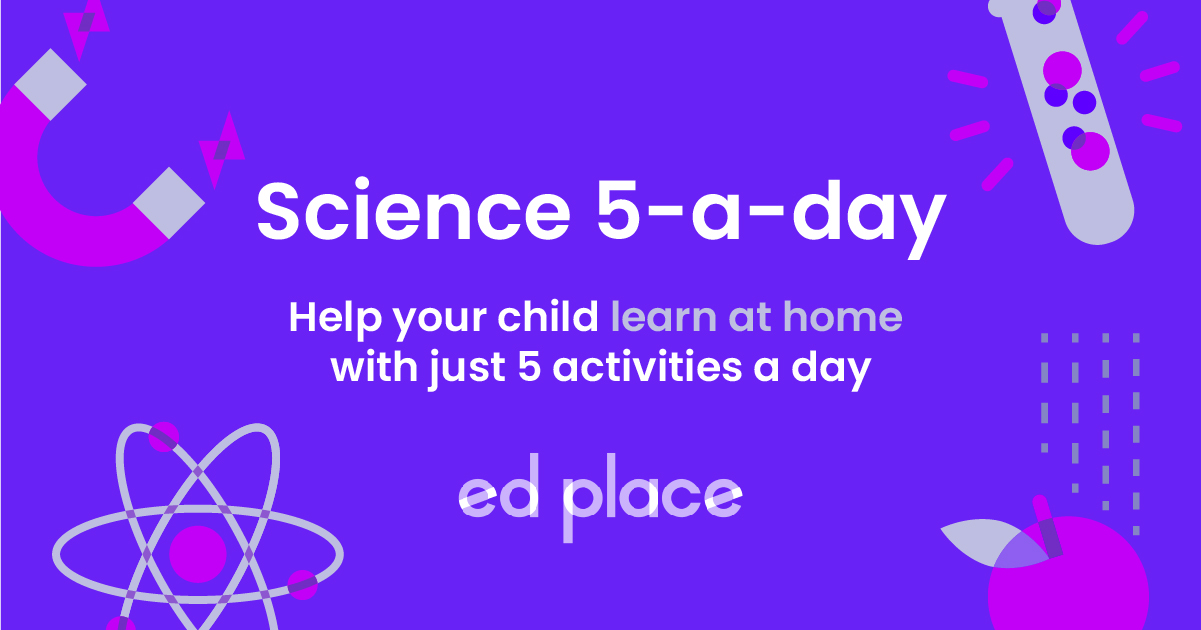
EdPlace's Key Stage 2 Home Learning Science Lesson: Light
Looking for short lessons to keep your child engaged and learning? Our experienced team of teachers have created English, maths and science lessons for the home, so your child can learn no matter where they are. And, as all activities are self-marked, you really can encourage your child to be an independent learner.
Get them started on the lesson below and then jump into our teacher-created activities to practice what they've learnt. We've recommended five to ensure they feel secure in their knowledge - 5-a-day helps keeps the learning loss at bay (or so we think!).
Are they keen to start practising straight away? Head to the bottom of the page to find the activities.
Now...onto the lesson!
Reflect on this and it'll become clear as day!
OK, so you and your young scientist are able to read this on your screen because of the way that light travels. It’s something we largely take for granted and that, in many ways, is part of the problem as to why light and shadows can be a tad confusing. So, at EdPlace, we believe that it's our mission to investigate all the areas of confusion, to bring them into the light, and to shoo away all those nasty dark areas and reveal their true simple nature.
Follow the step-by-step approach below to make this problem half as tricky!
We're confident that if you follow the step-by-step approach below your child will be able to:
1) Understand how light travels, why we can see objects and why objects form shadows
2) Apply this understanding
3) Explain their understanding back to you, if they've really cracked it!
Step 1: What's it all about?
OK, so, first of all, let’s try to get an overview of what this topic is about. Let’s start with the first principles:
1) Some things give out light: the sun, your kitchen light, your smartphone, the screen you’re looking at now. These are called luminous objects simply because they make light.
2) Light rays travel away from the light in all directions. When the kitchen light is on, wherever you’re standing in the kitchen, you can see it.
3) Light rays always travel straight! That’s a dead straight line.
4) We can see things that don’t light up because light reflects (bounces off) them and into our eyes. Your school book, your pizza, your dog, the stairs – are all visible because the light rays hitting them reflect (bounce) off into your eyes.
5) Because they don’t let light through, these objects block the light that’s reflecting off them and so form a shadow behind them (that’s an area that the light hasn’t got to). Make sense?
Step 2: Let's look at this more clearly...
Right, well that’s the key points listed, so let’s try to get to the bottom of light shining on things, us seeing them, and how those shadows are created.
It’s really important to visualise light travelling away from a luminous source in straight lines in every direction. Guess that’s why the sun is often drawn like that!
Got that? Light travelling straight. No bending! That helps to understand better why shadows form. Imagine millions of rays of light coming from this torch, all straight. What happens to the ones that hit the teddy? Do they bend round it? No, they bounce off in other directions. That means they don’t reach the screen. No light = dark teddy-shaped patch. The other rays, missing the teddy hit the screen, making it bright, all around the teddy-shaped shadow.
If light bent, there’d be no shadows as we understand them. So, how do we see the teddy – it’s not a light-up bear! Of course! The light rays that hit the teddy, and don’t make it to the screen, bounce off and some hit our eyes so that … we see the teddy! That’s a reflection of light – the rays of light reflect off the teddy.
Step 3: Had that light-bulb moment yet?
Right, let’s test this out and see whether that light bulb has come on yet!
Look at the image below:
What’s the luminous object in the picture? The torch – it’s producing light.
How many rays of light are coming out of the torch and in what way do they travel? Uncountable millions, going in all directions, and they’re travelling straight.
Some hit the vase and flower – where do they go? They bounce (reflect) off in loads of different directions.
Do some light rays miss the vase and hit the screen? Yes, of course – they light it up.
So, if some light rays reflect off the vase and don’t make it to the screen, what will you see on the screen? A dark area, the shape of a vase, called a shadow!
There, does that make a tad more sense now? Light … straight lines … reflecting off … shadows? Reckon the light’s dawned now? Ready for some questions to see? Let’s check it out...
Step 4: Check your child's understanding
OK, time to check whether this makes more sense – see whether you can use what we’ve been looking at to answer these questions. Then we’ll find out how EdPlace activities can consolidate your child's knowledge.
1) Can you see which of these is the odd-one-out?
Torch Sun Headlight Smartphone screen Onion bulb
2) When your bedroom light’s on, where are the light rays going?
3) In your bedroom might be things like your bed, magazine, cupboard, door, toys, etc. - how do you see them when the light’s on or the sun is shining into your room?
4) Have a look at your bathroom duck sitting here with a torch shining on to it:
Explain how a dark area forms behind where the duck is sitting.
5) Knowing how light travels, which shadow (A/B/C) do you think is the correct one?
Step 5 - Exploring Light and Shadows
Now, you’ve covered this topic together why not put this to the test and assign your child the following four activities in this order:
All activities are created by teachers and automatically marked. Plus, with an EdPlace subscription, we can automatically progress your child at a level tailored to their needs. Sending you progress reports along the way so you can track and measure progress, together - brilliant!
Activity 1 - Light and Shadows 1
Activity 2 - Light and Shadows 2
Answers:
1) Onion bulbs don’t give out light (they’re not luminous sources) though they do give out a really sharp smell!
2) The light rays go in every direction (straight) away from the light bulb.
3) You can see the things in your bedroom because when the light’s on (or the sun is shining) the objects are lit up. That means that billions of rays of light are hitting them and reflecting off in all directions. Some of those rays reach your eyes with the result that – hey presto! - you can see the object!
4) The rays of light from the torch are travelling straight. Some hit the duck and reflect off in other directions, so they don’t make it to the surface behind the duck. That means there’s a dark area behind the duck which they would have hit. That leaves a duck-shaped shadow behind it.
5) It’s going to be B, isn’t it? Look where the torch-light is coming from. It’s really important to imagine the light falling on the object and the rays which are going to reflect off. Shadow A would form if the torch was in front of the duck and it would be C if the torch was above.
Keep going! Looking for more activities, different subjects or year groups?
Click the button below to view the EdPlace English, maths, science and 11+ activity library








